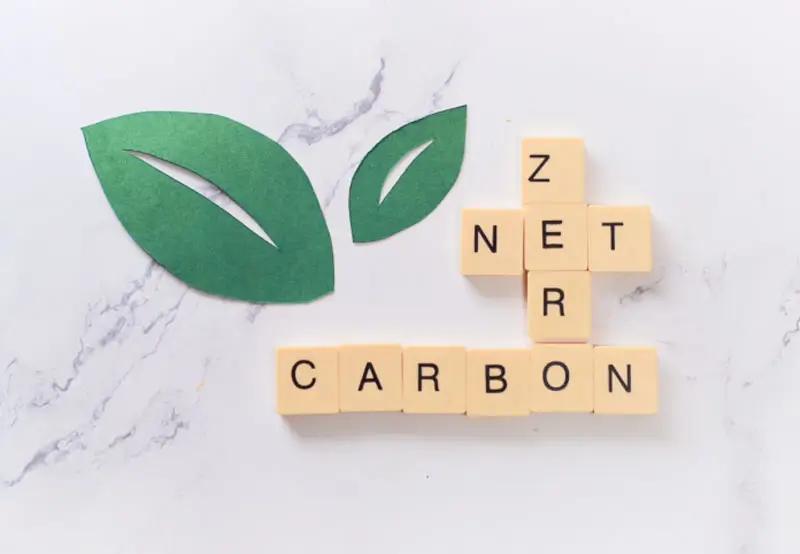India’s Green Steel Transition & Decarbonization Push
The steel industry in India plays a crucial role in driving the nation’s economic development. India is among the largest consumers and producers of steel globally and most of the manufacturing in India relies upon the production of steel. However, the historic steel industry is ranked among the highest in terms of carbon by a single industry and accounts for nearly 7 percent of the total CO 2 emissions. The urgent need to reduce carbon footprints has led to the rise of green steel—a term that signifies environmentally friendly and low carbon steel manufacturing practices.

Manufacture of green steel has not been as critical since India has a commitment of a net-zero carbon footprint by the year 2070. Key government policies, carbon credit trading mechanisms, and technological innovations are driving this transformation, making India a significant player in sustainable steel production. But what is green steel all about?
Green Steel Meaning: What is Green Steel?
Green steel is steel produced with lower or zero carbon footprint through predominantly renewable energy sources, green hydrogen, or electric arc furnaces instead of traditional blast furnaces that rely on coal. Green steel makes sure steel production is compatible with sustainability without sacrificing strength and durability required for application.
The low carbon steel industry is now placing emphasis on cleaner technology to achieve the objectives of sustainability and decarbonization. Methods such as direct reduced iron (DRI) manufacture with green hydrogen, carbon capture utilization and storage (CCUS), and electric arc furnaces (EAF) with scrap are being used for minimizing carbon footprint.
Why is Green Steel Important for India?
India is the second-largest steel-making country globally and produces nearly 10% of the world’s crude steel. However, the country’s steel industry is very dependent on coal and is among the carbon-hungriest sectors. India must make the transition to low carbon steel for a variety of reasons:
- Environmental Benefits: CO₂ reduction will benefit India in achieving its climate goals and improving air quality.
- Economic Gains: Green steel investment will attract new trade opportunities, encourage foreign investment, and enhance international competitiveness.
- Regulatory Compliance: Stronger environmental regulations and carbon pricing mechanisms, such as carbon credit trading, are steering the industry towards greener alternatives.
- Energy Security: Shifting from fossil fuels and adopting renewable sources of energy will give the steel industry energy security.
Key Initiatives for Green Steel Development in India
Major initiatives are being taken by India in enhancing green steel production. This movement of the country to low carbon steel is being stimulated by the policy of a government, the leadership of businesses, and external factors all over the world. Such developments can be listed as among the most significant:
1. National Green Hydrogen Mission
The national green hydrogen mission announced by the government of India will give India a green hydrogen global production hub. This is a revolution to the steel industry as green hydrogen can replace coal in the reduction process and thereby become a sustainable method of steel making.
2. Carbon Credit Trading Mechanism
India is establishing the mechanisms of the trading of carbon credits to compensate those companies which are capable of reducing their carbon levels. Other opportunities exist, which include the fact that the carbon credits obtained because of their sustainable operations are sold by the steel producers; this is what will continue to see other industries using greener technologies.
3. Production-Linked Incentive (PLI) Scheme for Specialty Steel
The Indian government launched a scheme on PLI that promotes the manufacturing of high-end, speciality, and low carbon steel. This plan is promoting the price of the eco-friendly procedures of steel manufactures.
4. Renewable Energy Integration
The major Indian steel manufacturers; Tata steel, JSW steel and SAIL are adopting renewable energy sources like; solar energy and wind energy as the source of energy in their manufacturing plants to reduce the use of fossil fuels.
5. Research & Development in Sustainable Technologies
The new technologies developed by India in research and development with the use of green hydrogen are Carbon captures, utilization and storage (CCUS), electric arc furnaces (EAF), and direct reduced iron (DRI). This is needed in making green steel production cost effective.
Challenges in India’s Green Steel Transition
Though India is advancing significantly, the shift to green steel is not without challenges:
- High Production Expense: The production cost of low carbon steel is still more than regular steel because of costly infrastructure and technology.
- Scarce Green Hydrogen Supplies: Large-scale production and affordability of green hydrogen are in infancy.
- Infrastructure & Supply Chain Challenges: The transition to green steel involves drastic supply chain changes, logistics, and sources of energy.
- Shortage of Policy Standardization: The investment in eco-friendly steel production needs to be hastened through well-defined policies and rewards.
The Future of Green Steel in India
India’s steel industry is at a pivotal point where innovation and sustainability must coexist. With policy support, technological developments, and industry partnerships, India has the potential to become a global leader in green steel. Emphasis on low carbon steel not only will assist the country in meeting its climate goals but also improve its competitive advantage in the global market.
As carbon credit trading and green hydrogen technology advance, we anticipate a major shake-up in the production of steel in India. The coming decade will play a crucial role in determining the future of green steel, establishing India as a leading country in sustainable industrial development.
Final Thoughts
Transition to green steel is not just a green need but also an economic and strategic opportunity of India. By adopting low carbon steel production methods, leveraging carbon credit trading, and investing in sustainable technologies, the steel industry in India can lead the way in global decarbonization efforts.
In future, it will require collaboration between the government, the private sector, and research centers so that the steel industry can be carbon-neutral. With proper policies, investments and technologies already conducted, India’s daring leap to green steel will mean its way into a more resilient and environmentally sustainable future.
Frequently Asked Questions (FAQs)
Green steel is steel produced with minimal carbon emissions using renewable energy, green hydrogen, or electric arc furnaces instead of coal-powered blast furnaces.
Green steel is crucial for reducing carbon emissions, meeting climate commitments, and maintaining India’s global competitiveness in the steel sector.
Technologies such as direct reduced iron (DRI) with green hydrogen, carbon capture utilization and storage (CCUS), and electric arc furnaces (EAF) are used for green steel production.
Carbon credit trading allows industries to buy and sell carbon credits, incentivizing lower carbon emissions and promoting green manufacturing practices.
Key challenges include high production costs, limited green hydrogen availability, infrastructure constraints, and lack of policy standardization.












